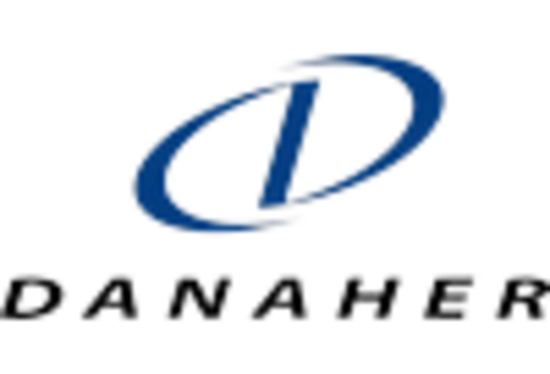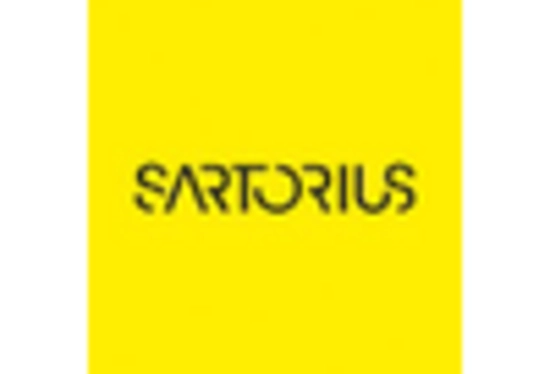-
EXECUTIVE SUMMARY
-
MARKET INTRODUCTION
-
Definition
-
Scope of the Study
- Research Objective
- Assumptions
- Limitations
-
RESEARCH METHODOLOGY
-
Overview
-
Data Mining
-
Secondary Research
-
Primary Research
- Primary Interviews and Information Gathering Process
- Breakdown of Primary Respondents
-
Forecasting Model
-
Market Size Estimation
- Bottom-Up Approach
- Top-Down Approach
-
Data Triangulation
-
Validation
-
MARKET DYNAMICS
-
Overview
-
Drivers
-
Restraints
-
Opportunities
-
MARKET FACTOR ANALYSIS
-
Value Chain Analysis
-
Porter’s Five Forces Analysis
- Bargaining Power of Suppliers
- Bargaining Power of Buyers
- Threat of New Entrants
- Threat of Substitutes
- Intensity of Rivalry
-
COVID-19 Impact Analysis
- Market Impact Analysis
- Regional Impact
- Opportunity and Threat Analysis
-
GLOBAL SINGLE USE BIOPROCESSING MARKET, BY PRODUCT
-
Overview
-
Filtration Assemblies
-
Disposable Bioreactors
-
Disposable Mixers
-
Media Bags & Containers
-
Others
-
GLOBAL SINGLE USE BIOPROCESSING MARKET, BY APPLICATION
-
Overview
-
Filtration
-
Purification
-
Cell Culture
-
Others
-
GLOBAL SINGLE USE BIOPROCESSING MARKET, BY END USER
-
Overview
-
Biopharmaceutical Manufacturers
-
Clinical & Academic Research Institutes
-
Others
-
GLOBAL SINGLE USE BIOPROCESSING MARKET, BY WORKFLOW
-
Overview
-
Upstream
-
Fermentation
-
Downstream
-
GLOBAL SINGLE USE BIOPROCESSING MARKET, BY REGION
-
Overview
-
North America
- US
- Canada
-
Europe
- Germany
- France
- UK
- Italy
- Spain
- Rest of Europe
-
Asia-Pacific
- China
- India
- Japan
- South Korea
- Australia
- Rest of Asia-Pacific
-
Rest of the World
- Middle East
- Africa
- Latin America
-
COMPETITIVE LANDSCAPE
-
Overview
-
Competitive Analysis
-
Market Share Analysis
-
Major Growth Strategy in the Global Single Use Bioprocessing Market,
-
Competitive Benchmarking
-
Leading Players in Terms of Number of Developments in the Global Single Use Bioprocessing Market,
-
Key developments and Growth Strategies
- New Product Launch/Service Deployment
- Merger & Acquisitions
- Joint Ventures
-
Major Players Financial Matrix
- Sales & Operating Income, 2022
- Major Players R&D Expenditure. 2022
-
COMPANY PROFILES
-
THERMO FISHER SCIENTIFIC INC.
- Company Overview
- Financial Overview
- Products Offered
- Key Developments
- SWOT Analysis
- Key Strategies
-
Sartorius AG
- Company Overview
- Financial Overview
- Products Offered
- Key Developments
- SWOT Analysis
- Key Strategies
-
Merck KGaA
- Company Overview
- Financial Overview
- Products Offered
- Key Developments
- SWOT Analysis
- Key Strategies
-
PALL CORPORATION
- Company Overview
- Financial Overview
- Products Offered
- Key Developments
- SWOT Analysis
- Key Strategies
-
Corning Incorporated
- Company Overview
- Financial Overview
- Products Offered
- Key Developments
- SWOT Analysis
- Key Strategies
-
EPPENDORF AG
- Company Overview
- Financial Overview
- Products Offered
- Key Developments
- SWOT Analysis
- Key Strategies
-
General Electric Company (GE Healthcare)
- Company Overview
- Financial Overview
- Products Offered
- Key Developments
- SWOT Analysis
- Key Strategies
-
Lonza
- Company Overview
- Financial Overview
- Products Offered
- Key Developments
- SWOT Analysis
- Key Strategies
-
RENTSCHLER BIOPHARMA SE
- Company Overview
- Financial Overview
- Products Offered
- Key Developments
- SWOT Analysis
- Key Strategies
-
JM BIOCONNECT
- Company Overview
- Financial Overview
- Products Offered
- Key Developments
- SWOT Analysis
- Key Strategies
-
MEISSNER FILTRATION PRODUCTS, INC.
- Company Overview
- Financial Overview
- Products Offered
- Key Developments
- SWOT Analysis
- Key Strategies
-
Infors AG
- Company Overview
- Financial Overview
- Products Offered
- Key Developments
- SWOT Analysis
- Key Strategies
-
BoehringerIngelheim GmbH
- Company Overview
- Financial Overview
- Products Offered
- Key Developments
- SWOT Analysis
- Key Strategies
-
Entegris, Inc.
- Company Overview
- Financial Overview
- Products Offered
- Key Developments
- SWOT Analysis
- Key Strategies
-
PBS Biotech Inc.
- Company Overview
- Financial Overview
- Products Offered
- Key Developments
- SWOT Analysis
- Key Strategies
-
APPENDIX
-
References
-
Related Reports
-
-
LIST OF TABLES
-
GLOBAL SINGLE USE BIOPROCESSING MARKET, SYNOPSIS, 2018-2034
-
GLOBAL SINGLE USE BIOPROCESSING MARKET, ESTIMATES & FORECAST, 2018-2034 (USD BILLION)
-
GLOBAL SINGLE USE BIOPROCESSING MARKET, BY PRODUCT, 2018-2034 (USD BILLION)
-
GLOBAL SINGLE USE BIOPROCESSING MARKET, BY APPLICATION, 2018-2034 (USD BILLION)
-
GLOBAL SINGLE USE BIOPROCESSING MARKET, BY END USER, 2018-2034 (USD BILLION)
-
GLOBAL SINGLE USE BIOPROCESSING MARKET, BY WORKFLOW, 2018-2034 (USD BILLION)
-
NORTH AMERICA: SINGLE USE BIOPROCESSING MARKET, BY PRODUCT, 2018-2034 (USD BILLION)
-
NORTH AMERICA: SINGLE USE BIOPROCESSING MARKET, BY APPLICATION, 2018-2034 (USD BILLION)
-
NORTH AMERICA: SINGLE USE BIOPROCESSING MARKET, BY END USER, 2018-2034 (USD BILLION)
-
NORTH AMERICA: SINGLE USE BIOPROCESSING MARKET, BY WORKFLOW, 2018-2034 (USD BILLION)
-
US: SINGLE USE BIOPROCESSING MARKET, BY PRODUCT, 2018-2034 (USD BILLION)
-
US: SINGLE USE BIOPROCESSING MARKET, BY APPLICATION, 2018-2034 (USD BILLION)
-
US: SINGLE USE BIOPROCESSING MARKET, BY END USER, 2018-2034 (USD BILLION)
-
US: SINGLE USE BIOPROCESSING MARKET, BY WORKFLOW, 2018-2034 (USD BILLION)
-
CANADA: SINGLE USE BIOPROCESSING MARKET, BY PRODUCT, 2018-2034 (USD BILLION)
-
CANADA: SINGLE USE BIOPROCESSING MARKET, BY APPLICATION, 2018-2034 (USD BILLION)
-
CANADA: SINGLE USE BIOPROCESSING MARKET, BY END USER, 2018-2034 (USD BILLION)
-
CANADA: SINGLE USE BIOPROCESSING MARKET, BY WORKFLOW, 2018-2034 (USD BILLION)
-
EUROPE: SINGLE USE BIOPROCESSING MARKET, BY PRODUCT, 2018-2034 (USD BILLION)
-
EUROPE: SINGLE USE BIOPROCESSING MARKET, BY APPLICATION, 2018-2034 (USD BILLION)
-
EUROPE: SINGLE USE BIOPROCESSING MARKET, BY END USER, 2018-2034 (USD BILLION)
-
EUROPE: SINGLE USE BIOPROCESSING MARKET, BY WORKFLOW, 2018-2034 (USD BILLION)
-
GERMANY: SINGLE USE BIOPROCESSING MARKET, BY PRODUCT, 2018-2034 (USD BILLION)
-
GERMANY: SINGLE USE BIOPROCESSING MARKET, BY APPLICATION, 2018-2034 (USD BILLION)
-
GERMANY: SINGLE USE BIOPROCESSING MARKET, BY END USER, 2018-2034 (USD BILLION)
-
GERMANY: SINGLE USE BIOPROCESSING MARKET, BY WORKFLOW, 2018-2034 (USD BILLION)
-
FRANCE: SINGLE USE BIOPROCESSING MARKET, BY PRODUCT, 2018-2034 (USD BILLION)
-
FRANCE: SINGLE USE BIOPROCESSING MARKET, BY APPLICATION, 2018-2034 (USD BILLION)
-
FRANCE: SINGLE USE BIOPROCESSING MARKET, BY END USER, 2018-2034 (USD BILLION)
-
FRANCE: SINGLE USE BIOPROCESSING MARKET, BY WORKFLOW, 2018-2034 (USD BILLION)
-
ITALY: SINGLE USE BIOPROCESSING MARKET, BY PRODUCT, 2018-2034 (USD BILLION)
-
ITALY: SINGLE USE BIOPROCESSING MARKET, BY APPLICATION, 2018-2034 (USD BILLION)
-
ITALY: SINGLE USE BIOPROCESSING MARKET, BY END USER, 2018-2034 (USD BILLION)
-
ITALY: SINGLE USE BIOPROCESSING MARKET, BY WORKFLOW, 2018-2034 (USD BILLION)
-
SPAIN: SINGLE USE BIOPROCESSING MARKET, BY PRODUCT, 2018-2034 (USD BILLION)
-
SPAIN: SINGLE USE BIOPROCESSING MARKET, BY APPLICATION, 2018-2034 (USD BILLION)
-
SPAIN: SINGLE USE BIOPROCESSING MARKET, BY END USER, 2018-2034 (USD BILLION)
-
SPAIN: SINGLE USE BIOPROCESSING MARKET, BY WORKFLOW, 2018-2034 (USD BILLION)
-
UK: SINGLE USE BIOPROCESSING MARKET, BY PRODUCT, 2018-2034 (USD BILLION)
-
UK: SINGLE USE BIOPROCESSING MARKET, BY APPLICATION, 2018-2034 (USD BILLION)
-
UK: SINGLE USE BIOPROCESSING MARKET, BY END USER, 2018-2034 (USD BILLION)
-
UK: SINGLE USE BIOPROCESSING MARKET, BY WORKFLOW, 2018-2034 (USD BILLION)
-
REST OF EUROPE: SINGLE USE BIOPROCESSING MARKET, BY PRODUCT, 2018-2034 (USD BILLION)
-
REST OF EUROPE: SINGLE USE BIOPROCESSING MARKET, BY APPLICATION, 2018-2034 (USD BILLION)
-
REST OF EUROPE: SINGLE USE BIOPROCESSING MARKET, BY END USER, 2018-2034 (USD BILLION)
-
REST OF EUROPE: SINGLE USE BIOPROCESSING MARKET, BY WORKFLOW, 2018-2034 (USD BILLION)
-
ASIA-PACIFIC: SINGLE USE BIOPROCESSING MARKET, BY PRODUCT, 2018-2034 (USD BILLION)
-
ASIA-PACIFIC: SINGLE USE BIOPROCESSING MARKET, BY APPLICATION, 2018-2034 (USD BILLION)
-
ASIA-PACIFIC: SINGLE USE BIOPROCESSING MARKET, BY END USER, 2018-2034 (USD BILLION)
-
ASIA-PACIFIC: SINGLE USE BIOPROCESSING MARKET, BY WORKFLOW, 2018-2034 (USD BILLION)
-
JAPAN: SINGLE USE BIOPROCESSING MARKET, BY PRODUCT, 2018-2034 (USD BILLION)
-
JAPAN: SINGLE USE BIOPROCESSING MARKET, BY APPLICATION, 2018-2034 (USD BILLION)
-
JAPAN: SINGLE USE BIOPROCESSING MARKET, BY END USER, 2018-2034 (USD BILLION)
-
JAPAN: SINGLE USE BIOPROCESSING MARKET, BY WORKFLOW, 2018-2034 (USD BILLION)
-
CHINA: SINGLE USE BIOPROCESSING MARKET, BY PRODUCT, 2018-2034 (USD BILLION)
-
CHINA: SINGLE USE BIOPROCESSING MARKET, BY APPLICATION, 2018-2034 (USD BILLION)
-
CHINA: SINGLE USE BIOPROCESSING MARKET, BY END USER, 2018-2034 (USD BILLION)
-
CHINA: SINGLE USE BIOPROCESSING MARKET, BY WORKFLOW, 2018-2034 (USD BILLION)
-
INDIA: SINGLE USE BIOPROCESSING MARKET, BY PRODUCT, 2018-2034 (USD BILLION)
-
INDIA: SINGLE USE BIOPROCESSING MARKET, BY APPLICATION, 2018-2034 (USD BILLION)
-
INDIA: SINGLE USE BIOPROCESSING MARKET, BY END USER, 2018-2034 (USD BILLION)
-
INDIA: SINGLE USE BIOPROCESSING MARKET, BY WORKFLOW, 2018-2034 (USD BILLION)
-
AUSTRALIA: SINGLE USE BIOPROCESSING MARKET, BY PRODUCT, 2018-2034 (USD BILLION)
-
AUSTRALIA: SINGLE USE BIOPROCESSING MARKET, BY APPLICATION, 2018-2034 (USD BILLION)
-
AUSTRALIA: SINGLE USE BIOPROCESSING MARKET, BY END USER, 2018-2034 (USD BILLION)
-
AUSTRALIA: SINGLE USE BIOPROCESSING MARKET, BY WORKFLOW, 2018-2034 (USD BILLION)
-
SOUTH KOREA: SINGLE USE BIOPROCESSING MARKET, BY PRODUCT, 2018-2034 (USD BILLION)
-
SOUTH KOREA: SINGLE USE BIOPROCESSING MARKET, BY APPLICATION, 2018-2034 (USD BILLION)
-
SOUTH KOREA: SINGLE USE BIOPROCESSING MARKET, BY END USER, 2018-2034 (USD BILLION)
-
SOUTH KOREA: SINGLE USE BIOPROCESSING MARKET, BY WORKFLOW, 2018-2034 (USD BILLION)
-
REST OF ASIA-PACIFIC: SINGLE USE BIOPROCESSING MARKET, BY PRODUCT, 2018-2034 (USD BILLION)
-
REST OF ASIA-PACIFIC: SINGLE USE BIOPROCESSING MARKET, BY APPLICATION, 2018-2034 (USD BILLION)
-
REST OF ASIA-PACIFIC: SINGLE USE BIOPROCESSING MARKET, BY END USER, 2018-2034 (USD BILLION)
-
REST OF ASIA-PACIFIC: SINGLE USE BIOPROCESSING MARKET, BY WORKFLOW, 2018-2034 (USD BILLION)
-
REST OF THE WORLD: SINGLE USE BIOPROCESSING MARKET, BY PRODUCT, 2018-2034 (USD BILLION)
-
REST OF THE WORLD: SINGLE USE BIOPROCESSING MARKET, BY APPLICATION, 2018-2034 (USD BILLION)
-
REST OF THE WORLD: SINGLE USE BIOPROCESSING MARKET, BY END USER, 2018-2034 (USD BILLION)
-
REST OF THE WORLD: SINGLE USE BIOPROCESSING MARKET, BY WORKFLOW, 2018-2034 (USD BILLION)
-
MIDDLE EAST: SINGLE USE BIOPROCESSING MARKET, BY PRODUCT, 2018-2034 (USD BILLION)
-
MIDDLE EAST: SINGLE USE BIOPROCESSING MARKET, BY APPLICATION, 2018-2034 (USD BILLION)
-
MIDDLE EAST: SINGLE USE BIOPROCESSING MARKET, BY END USER, 2018-2034 (USD BILLION)
-
MIDDLE EAST: SINGLE USE BIOPROCESSING MARKET, BY WORKFLOW, 2018-2034 (USD BILLION)
-
AFRICA: SINGLE USE BIOPROCESSING MARKET, BY PRODUCT, 2018-2034 (USD BILLION)
-
AFRICA: SINGLE USE BIOPROCESSING MARKET, BY APPLICATION, 2018-2034 (USD BILLION)
-
AFRICA: SINGLE USE BIOPROCESSING MARKET, BY END USER, 2018-2034 (USD BILLION)
-
AFRICA: SINGLE USE BIOPROCESSING MARKET, BY WORKFLOW, 2018-2034 (USD BILLION)
-
LATIN AMERICA: SINGLE USE BIOPROCESSING MARKET, BY PRODUCT, 2018-2034 (USD BILLION)
-
LATIN AMERICA: SINGLE USE BIOPROCESSING MARKET, BY APPLICATION, 2018-2034 (USD BILLION)
-
LATIN AMERICA: SINGLE USE BIOPROCESSING MARKET, BY END USER, 2018-2034 (USD BILLION)
-
LATIN AMERICA: SINGLE USE BIOPROCESSING MARKET, BY WORKFLOW, 2018-2034 (USD BILLION)\\
-
LIST OF FIGURES
-
RESEARCH PROCESS
-
MARKET STRUCTURE FOR THE GLOBAL SINGLE USE BIOPROCESSING MARKET
-
MARKET DYNAMICS FOR THE GLOBAL SINGLE USE BIOPROCESSING MARKET
-
GLOBAL SINGLE USE BIOPROCESSING MARKET, SHARE (%), BY PRODUCT, 2022
-
GLOBAL SINGLE USE BIOPROCESSING MARKET, SHARE (%), BY APPLICATION, 2022
-
GLOBAL SINGLE USE BIOPROCESSING MARKET, SHARE (%), BY END USER, 2022
-
GLOBAL SINGLE USE BIOPROCESSING MARKET, SHARE (%), BY WORKFLOW, 2022
-
GLOBAL SINGLE USE BIOPROCESSING MARKET, SHARE (%), BY REGION, 2022
-
NORTH AMERICA: SINGLE USE BIOPROCESSING MARKET, SHARE (%), BY REGION, 2022
-
EUROPE: SINGLE USE BIOPROCESSING MARKET, SHARE (%), BY REGION, 2022
-
ASIA-PACIFIC: SINGLE USE BIOPROCESSING MARKET, SHARE (%), BY REGION, 2022
-
REST OF THE WORLD: SINGLE USE BIOPROCESSING MARKET, SHARE (%), BY REGION, 2022
-
GLOBAL SINGLE USE BIOPROCESSING MARKET: COMPANY SHARE ANALYSIS, 2022 (%)
-
THERMO FISHER SCIENTIFIC INC.: FINANCIAL OVERVIEW SNAPSHOT
-
THERMO FISHER SCIENTIFIC INC.: SWOT ANALYSIS
-
SARTORIUS AG: FINANCIAL OVERVIEW SNAPSHOT
-
SARTORIUS AG: SWOT ANALYSIS
-
MERCK KGAA: FINANCIAL OVERVIEW SNAPSHOT
-
MERCK KGAA: SWOT ANALYSIS
-
PALL CORPORATION: FINANCIAL OVERVIEW SNAPSHOT
-
PALL CORPORATION: SWOT ANALYSIS
-
CORNING INCORPORATED.: FINANCIAL OVERVIEW SNAPSHOT
-
CORNING INCORPORATED.: SWOT ANALYSIS
-
EPPENDORF AG: FINANCIAL OVERVIEW SNAPSHOT
-
EPPENDORF AG: SWOT ANALYSIS
-
GENERAL ELECTRIC COMPANY (GE HEALTHCARE): FINANCIAL OVERVIEW SNAPSHOT
-
GENERAL ELECTRIC COMPANY (GE HEALTHCARE): SWOT ANALYSIS
-
LONZA: FINANCIAL OVERVIEW SNAPSHOT
-
LONZA: SWOT ANALYSIS
-
RENTSCHLER BIOPHARMA SE: FINANCIAL OVERVIEW SNAPSHOT
-
RENTSCHLER BIOPHARMA SE: SWOT ANALYSIS
-
JM BIOCONNECT: FINANCIAL OVERVIEW SNAPSHOT
-
JM BIOCONNECT: SWOT ANALYSIS
-
MEISSNER FILTRATION PRODUCTS, INC.: FINANCIAL OVERVIEW SNAPSHOT
-
MEISSNER FILTRATION PRODUCTS, INC.: SWOT ANALYSIS
-
INFORS AG: FINANCIAL OVERVIEW SNAPSHOT
-
INFORS AG: SWOT ANALYSIS
-
ILLUMINA, INC: FINANCIAL OVERVIEW SNAPSHOT
-
ILLUMINA, INC: SWOT ANALYSIS
-
ENTEGRIS, INC.: FINANCIAL OVERVIEW SNAPSHOT
-
ENTEGRIS, INC.: SWOT ANALYSIS
-
PBS BIOTECH INC.: FINANCIAL OVERVIEW SNAPSHOT
-
PBS BIOTECH INC.: SWOT ANALYSIS










Leave a Comment